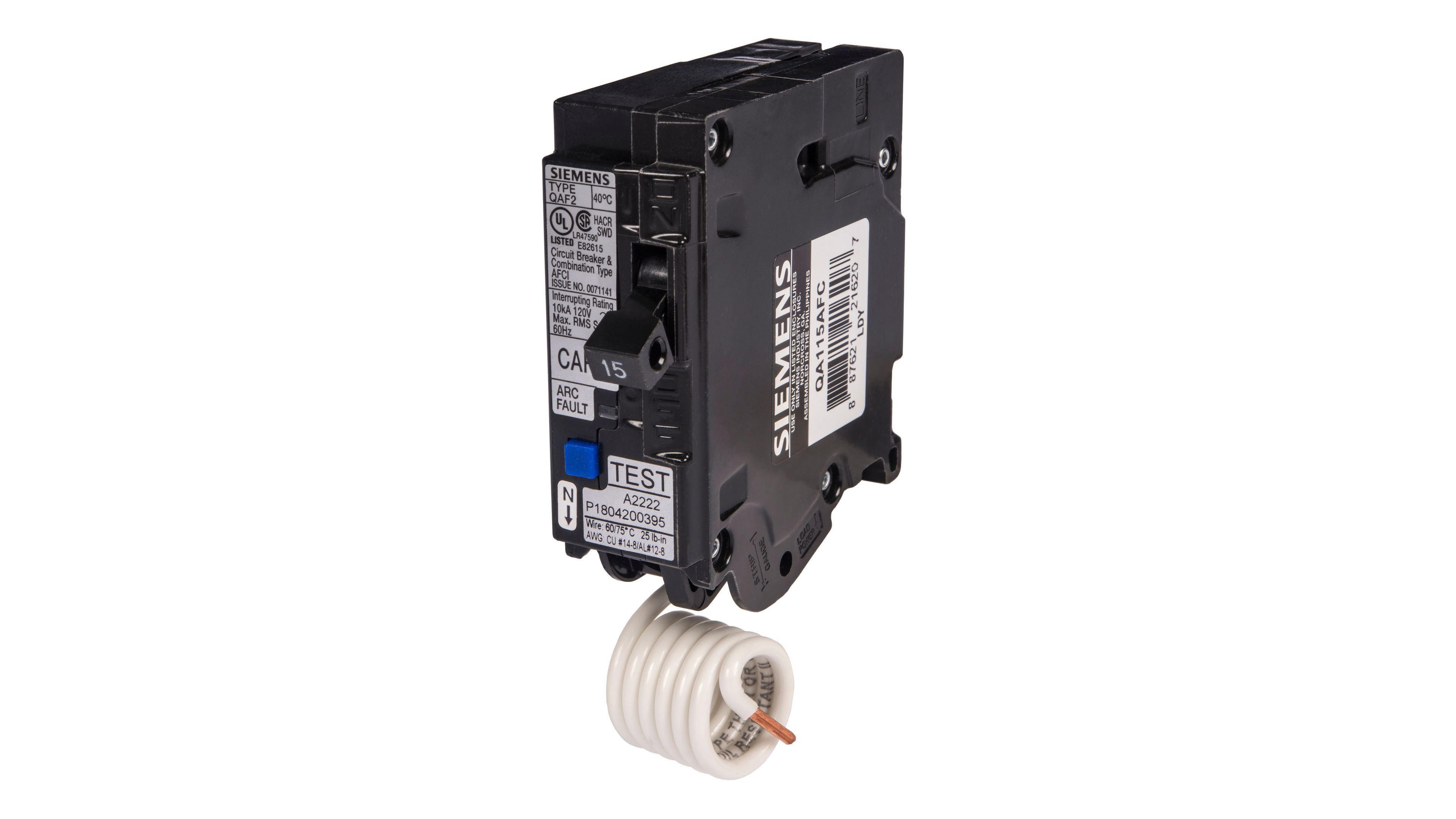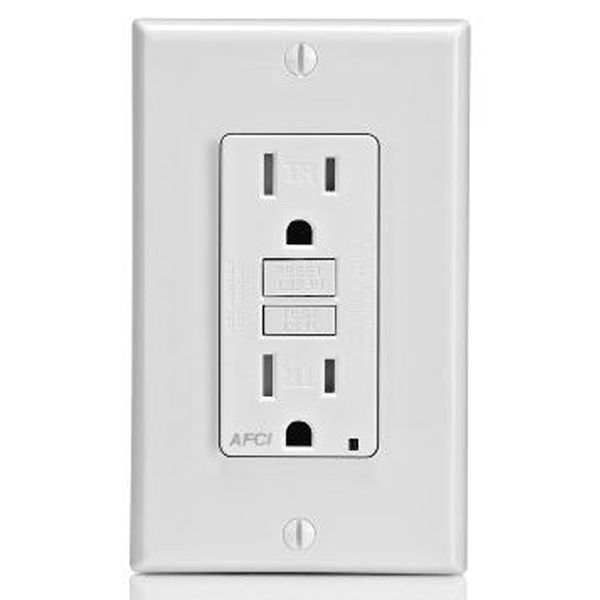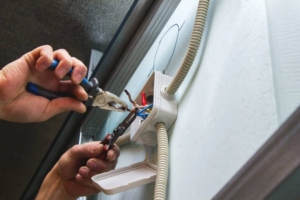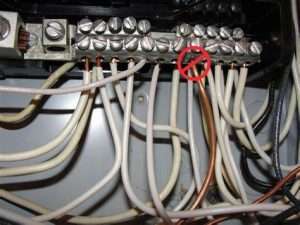AFCI Protection Missing In Older Homes: What Every Homeowner Needs to Know
Arcing and safety: Arcing is a common electrical phenomenon that occurs when an electrical current jumps across a gap in the insulation of an electrical circuit, creating a spark. This can lead to electrical fires, explosions, and other hazards that can be dangerous or even deadly. In this article, we’ll explore the basics of arcing and how to identify, prevent, and mitigate arc hazards in your home or workplace.
As a homeowner, it’s important to prioritize the safety of your home and its occupants. One way to do this is by installing arc fault circuit interrupters, or AFCIs, in your electrical system. In this post, we’ll cover the basics of AFCI protection, including what AFCIs are, where they’re required, the benefits of AFCI protection, and how to install and maintain them.
Identifying Arc Hazards:
Arcing can occur in a variety of electrical systems and equipment, including appliances, power tools, and electrical panels. Some common signs of arc hazards include:
- Flickering or dimming lights
- Buzzing or humming noises coming from electrical equipment
- Burn marks or discoloration on electrical outlets, cords, or plugs
- Electrical shocks or tingling sensations when touching equipment
If you notice any of these signs, it’s important to take action to identify and address the source of the arc hazard.
Preventing Arc Hazards:
Preventing arc hazards is essential to maintaining electrical safety in your home or workplace. Some steps you can take to prevent arc hazards include:
- Ensuring that all electrical equipment is properly grounded and installed according to manufacturer instructions.
- Using GFCI (Ground Fault Circuit Interrupter) outlets in areas where electrical shock hazards are present.
- Replacing damaged or frayed cords and plugs on electrical equipment.
- Avoiding overloading electrical circuits or extension cords.
- Having a licensed electrician perform regular electrical safety inspections and maintenance.
Mitigating Arc Hazards:
If you identify an arc hazard in your electrical system, it’s important to take steps to mitigate the risk of electrical fires or other hazards. Some steps you can take to mitigate arc hazards include:
- Turning off power to the affected circuit or equipment until it can be repaired or replaced.
- Using arc-resistant electrical equipment in areas where arc hazards are present.
- Implementing safety procedures, such as personal protective equipment, for workers who may be exposed to arc hazards.
- Conducting regular safety training for workers or family members who may use or interact with electrical equipment.
What are AFCIs?
AFCIs are devices that are designed to detect and prevent electrical fires caused by arcing faults. Arcing faults occur when there is a breakdown in the insulation of electrical wiring, causing an electrical current to jump across a gap and create a spark. This can lead to fires, which can be especially dangerous if they occur in hidden spaces, such as inside walls or ceilings.
AFCIs work by continuously monitoring the electrical current in a circuit and detecting any changes that may indicate an arcing fault. If an arcing fault is detected, the AFCI will immediately interrupt the circuit to prevent a fire from starting.
Where are AFCIs required?
AFCIs are required by the National Electrical Code (NEC) in certain areas of the home, including bedrooms, living rooms, dining rooms, and other areas where electrical outlets are located. The exact requirements may vary depending on the local building codes, but in general, any new construction or major renovation must include AFCIs in these areas.
There are some exceptions to the AFCI requirements, such as for circuits that are dedicated to certain appliances, such as refrigerators or washing machines. However, in general, it’s a good idea to include AFCIs in as many areas of the home as possible to maximize safety.
Benefits of AFCI protection
The primary benefit of AFCI protection is the prevention of electrical fires caused by arcing faults. An afci breaker is used because it detects arcs, which can prevent fires from starting. This can be especially important in hidden areas of the home where fires can easily spread before being detected.
AFCI breakers can also protect against electric shock and other electrical hazards. By interrupting the circuit, AFCIs can prevent electrical currents from flowing through a person’s body, which can be especially dangerous in wet or damp areas of the home.
Installing AFCIs
Installing an AFCI (Arc Fault Circuit Interrupter) breaker is a complex electrical task that should only be performed by a licensed electrician. However, here are some general steps that may be involved in the installation process:
- Turn off the power to the circuit: Before installing the AFCI breaker, turn off the power to the circuit at the main electrical panel.
- Remove the existing breaker: Remove the existing circuit breaker from the panel by pulling it firmly away from the buss bar. Be careful not to touch any live electrical parts.
- Install the AFCI breaker: Install the new AFCI breaker into the panel, making sure that it is properly aligned with the buss bar. The breaker should snap into place when it is properly installed.
- Connect the circuit wires: Connect the black wire from the circuit to the AFCI breaker’s hot terminal, the white wire to the neutral terminal, and the green or bare wire to the ground terminal.
- Test the AFCI breaker: After the installation is complete, turn the power back on to the circuit and test the AFCI breaker to ensure that it is working properly. This can be done using the test button on the breaker.
- Label the breaker: Finally, label the new AFCI breaker in the panel with the circuit number or other identifying information to make it easy to locate and service in the future.
If you’re not a licensed electrician, it’s best to hire a professional to perform the installation to ensure that it’s done safely and up to code. The cost of installing an AFCI (Arc Fault Circuit Interrupter) breaker will change depending on the location of the breaker, the size of the electrical panel, and the cost of labor in your area. The average cost of installing an AFCI breaker can range from $150 to $300 or more.
Whether to install an AFCI (Arc Fault Circuit Interrupter) breaker or an AFCI outlet depends on the specific needs of your home’s electrical system. Here are some factors to consider when deciding between the two:
AFCI breaker:
An AFCI breaker provides protection for an entire circuit, which can be beneficial in areas where multiple outlets or appliances are connected to the same circuit. Installing an AFCI breaker is typically more expensive than installing an AFCI outlet, but it provides comprehensive protection for the entire circuit.
Pros:
- Provides comprehensive protection for an entire circuit
- Helps to prevent electrical fires caused by arcing faults in the wiring
- Can help ensure that your home is up to code in areas where AFCIs are required
Cons:
- More expensive than installing an AFCI outlet
- Can be a complex electrical task that requires the expertise of a licensed electrician
- May not be compatible with older electrical systems
AFCI outlet:
An AFCI outlet provides protection for a single outlet and any connected devices or appliances. This can be beneficial in areas where only one or a few outlets need to be protected. Installing an AFCI outlet is typically less expensive than installing an AFCI breaker, but it only provides protection for a single outlet.
Pros:
- Less expensive than installing an AFCI breaker
- Provides protection for a single outlet and connected devices or appliances
- Easy to install and can be a DIY project in some cases
Cons:
- Provides protection for only one outlet
- May not be compatible with some older electrical systems
- May not be sufficient for providing comprehensive protection in areas where multiple outlets or appliances are connected to the same circuit
Maintaining AFCIs
Once AFCIs are installed, it’s important to test them regularly to ensure they’re working properly. Most AFCIs come with a test button that can be used to check the device. If the AFCI fails the test, it should be replaced as soon as possible.
Stay aware of signs that your AFCIs may be faulty, such as tripping frequently or making unusual sounds. If you notice any of these signs, it’s a good idea to have a licensed electrician inspect the device and make any necessary repairs or replacements.
Arcing and Safety
Arcing is a common electrical phenomenon that can pose serious safety hazards if not properly addressed. By identifying, preventing, and mitigating arc hazards in your home or workplace, you can help protect against electrical fires, explosions, and other dangers. If you’re not sure how to identify or address arc hazards, don’t hesitate to contact a licensed electrician or other qualified professional for assistance.
AFCI protection is an important part of home safety that every homeowner should be aware of. By understanding what AFCIs are, where they’re required, the benefits of AFCI protection, and how to install and maintain them, you can help keep your home and its occupants safe from electrical fires and other hazards. If you’re not sure whether your home has AFCIs installed or if you’re interested in upgrading your electrical system, don’t hesitate to contact a licensed electrician for help. They can assess your home’s needs and provide recommendations for AFCI installation and other electrical upgrades.
AFCI protection is an essential component of home safety that should not be overlooked. Installing AFCIs in your home and testing them regularly, you can help prevent electrical fires and protect against other electrical hazards. By working with a licensed electrician and following local building codes, you can ensure that your home’s electrical system is up to code and safe for you and your family.
I hope this has been helpful. If you have additional questions and want to get in contact with GGR Home Inspections please send us a note, text, or call.









Pingback: Differences Between GFCI Receptacle and GFCI Circuit Breaker? (2023 Guide) – GGR Home Inspections